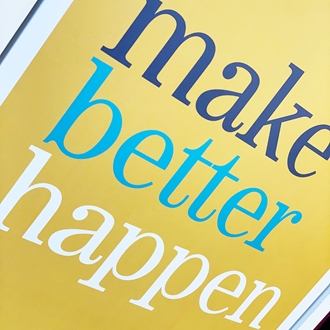Last updated: 16th August 2022
To make this site work properly https://www.icecreates.com, we place small data files called cookies on your device. Most big websites do this too.
What are cookies?
A cookie is a small text file that a website saves on your computer or mobile device when you visit the site. It enables the website to remember your actions and preferences (such as login, language, font size and other display preferences) over a period of time, so you don’t have to keep re-entering them whenever you come back to the site or browse from one page to another.
How do we use cookies?
We use cookies to remember your member details, should you choose so.
All Cookies used by and on our site are used in accordance with current Cookie Law. We may use some or all of the following types of Cookie. Furthermore, we use cookies from the following providers:
The cookies help us understand the usage of https://www.icecreates.com to identify if visitors are having trouble navigating certain parts of the site and help us understand how we can improve it.
Strictly Necessary Cookies
A Cookie falls into this category if it is essential to the operation of our site, supporting functions such as logging in, your shopping basket and payment transactions.
Analytics Cookies
It is important for us to understand how you use our site, for example, how efficiently you are able to navigate around it, and what features you use. Analytics Cookies enable us to gather this information, helping us to improve our site and your experience of it.
Functionality Cookies
Functionality Cookies enable us to provide additional functions to you on our site such as personalisation and remembering your saved preferences. Some functionality Cookies may also be strictly necessary Cookies, but not all necessarily fall into that category.
Targeting Cookies
It is important for us to know when and how often you visit our site and which parts of it you have used (including which pages you have visited and which links you have visited). As with analytics Cookies, this information helps us to better understand you and, in turn, to make our site and advertising more relevant to your interests. (Some information gathered by targeting Cookies may also be shared with third parties).
Third Party Cookies
Third party Cookies are not placed by us; instead, they are placed by third parties that provide services to us and/or to you. Third party Cookies may be used by advertising services to serve up tailored advertising to you on our site, or by third parties providing analytics services to Us (these Cookies will work in the same way as analytics Cookies described above).
Persistent Cookies
Any of the above types of Cookie may be a persistent Cookie. Persistent Cookies are those which remain on your computer or device for a predetermined period and are activated each time you visit our site.
Session Cookies
Any of the above types of Cookie may be a session Cookie. Session Cookies are temporary and only remain on your computer or device from the point at which you visit our site until you close your browser. Session Cookies are deleted when you close your browser.
Cookies ICE Creates uses
On icecreates.com, we use Google Analytics tracking software to create a cookie on your machine (only if you have opted in). This is so we can track and analyse in-depth detail about the visitors to our website. This information contains details such as the device type and browser used to access the website, how long users spend on the website and individual pages, and the user journey in a session.
How to control cookies
You can control and/or delete cookies as you wish – for details, see aboutcookies.org. You can delete all cookies that are already on your computer and you can set most browsers to prevent them from being placed. If you do this however, you may have to manually adjust some preferences every time you visit a site and some services and functionalities may not work.
On this website, when you first access and download the files, we ask you, through a popup modal, whether you would like to give us permission to place cookies on your machine. You can always opt out if you have opted in by scrolling to the footer of the website and clicking on the 'Cookie Settings' icon. This will bring the popup modal back up where you can then either 'agree' or 'deny' cookies. Denying cookies will delete any and all cookies that we use on the site.
Alternatively, your web browser will also have a setting to delete cookies from websites. This is usually found under the main menu / settings tab within your browser. For more information on how to delete cookies, see Google search: How to delete cookies fom your web browser
Consent and Control
Before Cookies are placed on your computer or device, you will be shown a description of prompt, e.g. pop-up requesting your consent to set those Cookies. By giving your consent to the placing of Cookies you are enabling us to provide the best possible experience and service to you. You may, if you wish, deny consent to the placing of Cookies (unless those Cookies are strictly necessary); however certain features of our site may not function fully or as intended. (You will be given the opportunity to allow and/or deny different categories of Cookie that We use). You can return to your Cookie preferences to review and/or change them at any time.
In addition to the controls that we provide, you can choose to enable or disable Cookies in your internet browser. Most internet browsers also enable you to choose whether you wish to disable all Cookies or only third-party Cookies. By default, most internet browsers accept Cookies, but this can be changed. For further details, please consult the help menu in your internet browser or the documentation that came with your device.
The links below provide instructions on how to control Cookies in all mainstream browsers:
Google Chrome: https://support.google.com/chrome/answer/95647?hl=en-GB
Microsoft Internet Explorer: https://support.microsoft.com/en-us/kb/278835
Microsoft Edge: https://support.microsoft.com/en-gb/products/microsoft-edge (Please note that there are no specific instructions at this time, but Microsoft support will be able to assist)
Safari (macOS): https://support.apple.com/kb/PH21411?viewlocale=en_GB&locale=en_GB
Safari (iOS): https://support.apple.com/en-gb/HT201265
Mozilla Firefox: https://support.mozilla.org/en-US/kb/enable-and-disable-Cookies-website-preferences
Android: https://support.google.com/chrome/answer/95647?co=GENIE.Platform%3DAndroid&hl=en (Please refer to your device’s documentation for manufacturers’ own browsers)
GDPR and Umbraco
On the 25th of May 2018 the EU General Data Protection Regulation will be enforced. We have investigated where improvements need to be made in order for all Umbraco products and services to meet the needed data protection requirements. On this page you'll find relevant documents and information about Umbraco and GDPR (the site will be updated regularly with new information). We are fully compliant with the GDPR regulations.
Blog post "Umbraco and GDPR" including the 4 categories of GDPR at Umbraco.
Changes to this Cookie Policy
We may alter this Cookie Policy at any time. (If We do so, details of the changes will be highlighted at the top of this page). Any such changes will become binding on you on your first use of our Site after the changes have been made. You are therefore, advised to check this page from time to time.
In the event of any conflict between the current version of this Cookie Policy and any previous version(s), the provisions current and in effect shall prevail unless it is expressly stated otherwise.
Our details
We are passionate about protecting your privacy and we welcome any questions and feedback you may have. Please use the contact details below to get in touch with us.
ICE Creates Limited
Email: Dataprotection@icecreates.com
Address: Head Office, ICE, Clear View, 3 Abbots Quay, Monks Ferry, Wirral CH41 5LH
Thoughts or questions about this Cookies? Please, let us know.
 Culture
Culture
 Design
Design
 Lifestyles
Lifestyles
 Insight
Insight
 Social
Social
 Creative
Creative








